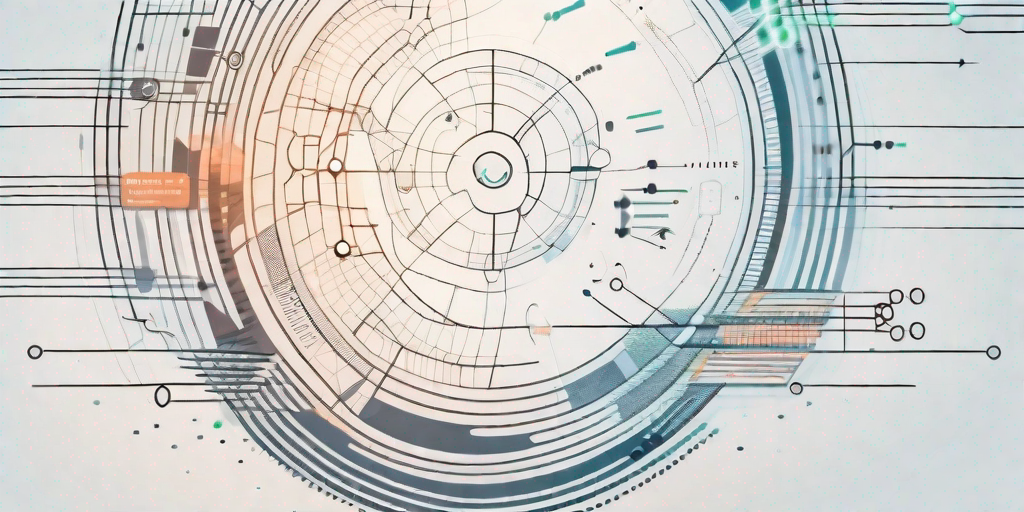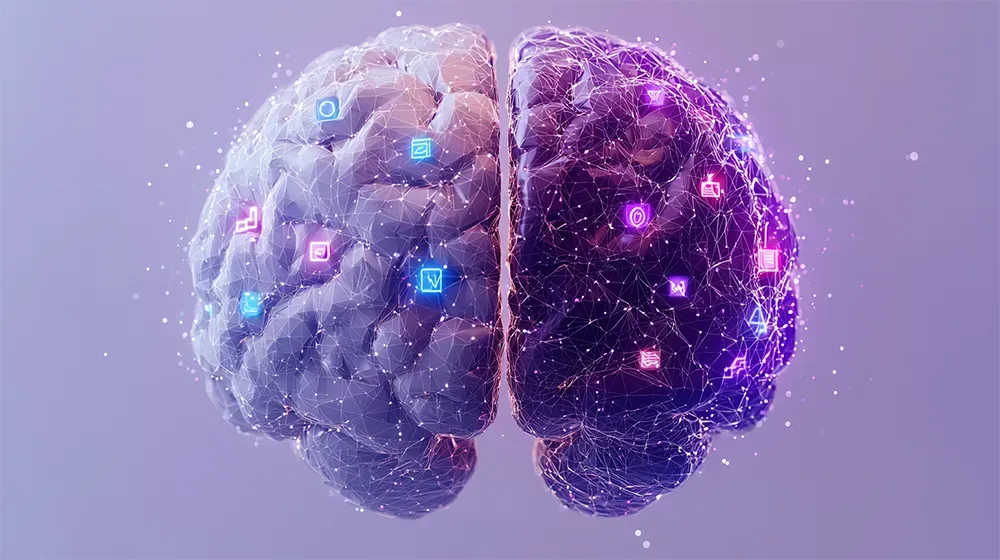Understanding Bioinformatics: The Role of a Futurist Speaker

Understanding Bioinformatics: The Role of a Futurist Speaker
Welcome to the world of bioinformatics! This fascinating field at the intersection of biology and information technology holds the key to unlocking the mysteries of life. In this article, we will explore the role of a futurist speaker in demystifying bioinformatics and making it accessible to everyone.
Understanding Bioinformatics: A Brief Introduction
Before we delve into the role of a futurist speaker, it is essential to have a basic understanding of what bioinformatics is all about. At its core, bioinformatics is the application of computational methods and tools to analyze biological data. It involves collecting, storing, retrieving, and analyzing vast amounts of biological information, such as DNA sequences, protein structures, and gene expression levels.
With the advent of high-throughput technologies, the amount of biological data generated has skyrocketed, presenting both opportunities and challenges. Bioinformatics plays a crucial role in organizing and making sense of this deluge of data, ultimately enabling us to unravel the secrets of life.
Let's take a closer look at the different aspects of bioinformatics. One of the key tasks in bioinformatics is the collection of biological data. This data can come from various sources, such as DNA sequencing machines, protein databases, and public repositories. Scientists and researchers work tirelessly to gather as much data as possible, as it forms the foundation for further analysis and exploration.
Once the data is collected, it needs to be stored in a way that is easily accessible and can be efficiently retrieved. Bioinformatics databases are designed to handle the massive amounts of biological data generated. These databases employ specialized algorithms and data structures to ensure efficient storage and retrieval of information. They act as virtual warehouses, housing the vast treasure trove of biological knowledge.
Retrieving the stored data is just the beginning. The real challenge lies in analyzing and making sense of the data. Bioinformatics tools and software come into play here. These tools employ sophisticated algorithms and statistical models to extract meaningful insights from the data. They can identify patterns, predict protein structures, and even determine gene functions. Without these tools, the sheer volume of data would be overwhelming, and extracting useful information would be nearly impossible.
One of the most exciting applications of bioinformatics is in the field of genomics. Genomics is the study of an organism's entire DNA sequence, including all of its genes. Bioinformatics tools are used to analyze and interpret genomic data, providing valuable insights into the genetic makeup of organisms. This information can be used to understand the causes of diseases, develop new drugs, and even create genetically modified organisms.
In addition to genomics, bioinformatics also plays a crucial role in proteomics, which is the study of an organism's entire set of proteins. Proteins are the workhorses of the cell, carrying out various functions and processes. Bioinformatics tools help in identifying and characterizing proteins, understanding their structures, and predicting their interactions with other molecules. This knowledge is invaluable in fields such as drug discovery, where understanding protein interactions is essential.
As technology continues to advance, the field of bioinformatics is poised for even greater growth and impact. The development of faster and more powerful computers, along with advancements in machine learning and artificial intelligence, will enable scientists to analyze and interpret biological data on an unprecedented scale. This will lead to new discoveries, breakthroughs in medicine, and a deeper understanding of life itself.
In conclusion, bioinformatics is a fascinating field that combines biology, computer science, and statistics to unravel the mysteries of life. It plays a crucial role in collecting, storing, retrieving, and analyzing vast amounts of biological data. With the help of bioinformatics, scientists are able to make sense of this data and gain valuable insights into the workings of living organisms. The future of bioinformatics holds immense potential, and it is an exciting time to be a part of this rapidly evolving field.
The Role of a Futurist Speaker in Demystifying Bioinformatics
Bioinformatics can be an intimidating field for many, with its complex algorithms, specialized software, and scientific jargon. This is where a futurist speaker comes in. Their role is to bridge the gap between the intricacies of bioinformatics and the general public, making it accessible and understandable to all.
A futurist speaker possesses not only deep knowledge of bioinformatics but also the ability to communicate complex concepts in a relatable and engaging manner. They act as guides, illuminating the path through the dense forest of genetic sequences and statistical analyses.
Decoding the Language of Life: The Intersection of Biology and Information Technology
One of the primary tasks of a futurist speaker is to decode the language of life. In bioinformatics, data is represented using a variety of formats and codes. Genomic sequences are composed of four letters representing the bases: A, T, C, and G. Protein structures are described using a rich vocabulary of amino acids. Gene expression data is captured in numerical arrays.
A skilled futurist speaker can navigate this linguistic landscape with ease, translating the complex codes and technical jargon into everyday language. They can explain how our genetic code holds the blueprint for life and how bioinformatics allows us to decipher its meaning.
Imagine standing at the edge of a vast library, filled with books written in a language you don't understand. The futurist speaker acts as your personal translator, guiding you through the shelves and unraveling the hidden messages within each book. They unveil the secrets of DNA, showing you how the arrangement of those four letters can determine the color of your eyes, the texture of your hair, and even your susceptibility to certain diseases.
But it doesn't stop there. The futurist speaker also reveals the intricate dance between biology and information technology. They paint a picture of how bioinformatics merges these two seemingly disparate fields, creating a powerful tool that enables us to unlock the mysteries of life itself. Through their words, you begin to see the beauty and complexity of this intersection, as biology and information technology intertwine to shape our understanding of the world.
How a Futurist Speaker Translates Complex Bioinformatics Concepts for the Average Person
One of the challenges of bioinformatics is its inherent complexity. Algorithms, statistical models, and machine learning techniques can seem daunting to those without a technical background. A futurist speaker, however, excels in simplifying these concepts and making them accessible to the average person.
Imagine sitting in a crowded theater, surrounded by people from all walks of life. The futurist speaker takes the stage, armed with their knowledge and passion for bioinformatics. They begin by telling a story, weaving together the threads of science and technology, captivating the audience with tales of discovery and innovation.
With each word, the futurist speaker breaks down the barriers that separate the audience from the world of bioinformatics. They use relatable examples, drawing parallels between the complexities of genetic sequencing and everyday experiences. They show how bioinformatics can help us understand the origin of diseases, like a detective unraveling the clues of a mysterious case.
But it's not just storytelling that the futurist speaker employs. They also harness the power of visuals, using captivating images and interactive demonstrations to bring abstract concepts to life. They show how bioinformatics can design more efficient crops, like a master gardener cultivating a bountiful harvest.
Through their words and visuals, the futurist speaker paints a vivid picture of the potential of bioinformatics. They inspire the audience to see beyond the complexity and embrace the possibilities that lie within this fascinating field. They empower the average person to become an active participant in the world of bioinformatics, fostering a sense of curiosity and wonder that will continue to drive innovation and discovery.
Practical Applications and Future Possibilities of Bioinformatics
As we continue to unravel the secrets of life, the practical applications of bioinformatics are expanding rapidly. From healthcare to agriculture, bioinformatics is revolutionizing various fields.
In healthcare, bioinformatics enables personalized medicine, tailoring treatments to an individual's genetic makeup. It aids in diagnosing diseases, predicting treatment responses, and identifying potential drug targets. By analyzing vast databases of genomic and clinical data, bioinformatics can unveil hidden patterns and provide valuable insights.
For example, bioinformatics has played a crucial role in the fight against cancer. By analyzing the genetic profiles of tumors, researchers can identify specific mutations that drive the growth of cancer cells. This information can then be used to develop targeted therapies that attack these mutations, leading to more effective and personalized treatments.
In addition to cancer, bioinformatics is also making significant contributions to the field of infectious diseases. By studying the genomes of pathogens, scientists can gain a better understanding of their virulence and how they spread. This knowledge can help in the development of vaccines and the design of strategies to control outbreaks.
In agriculture, bioinformatics plays a crucial role in crop improvement. By studying the genetic makeup of plants, researchers can develop more resilient and productive varieties. With the global population soaring, bioinformatics offers a promising solution to ensure food security and sustainable agriculture.
For instance, bioinformatics has been instrumental in the development of genetically modified crops. By identifying genes responsible for desirable traits such as pest resistance or increased yield, scientists can introduce these genes into crop plants, resulting in improved agricultural productivity.
Furthermore, bioinformatics is also being used to address environmental challenges. By studying the genomes of organisms in different ecosystems, researchers can gain insights into the complex interactions between species and their environment. This knowledge can help in the conservation of biodiversity and the development of strategies to mitigate the impacts of climate change.
The future possibilities of bioinformatics are virtually limitless. With advancements in technology and the exponential growth of data, we can expect even greater insights into the workings of life. From unraveling the mysteries of the human brain to understanding the complexities of ecosystems, bioinformatics holds the key to answering some of the most profound questions we face as a society.
For example, bioinformatics is playing a crucial role in the field of neuroscience. By analyzing the vast amount of genomic and neuroimaging data, researchers are gaining a better understanding of the genetic basis of neurological disorders and the complex networks of the brain. This knowledge can lead to the development of new therapies for conditions such as Alzheimer's disease and schizophrenia.
In addition, bioinformatics is also being used to study the microbiome, the vast community of microorganisms that live in and on our bodies. By analyzing the genetic makeup of these microorganisms, scientists are uncovering the role they play in human health and disease. This knowledge can lead to the development of new treatments for conditions such as inflammatory bowel disease and obesity.
In conclusion, the role of bioinformatics in shaping the future of healthcare, agriculture, and environmental conservation cannot be overstated. With its ability to analyze vast amounts of data and uncover hidden patterns, bioinformatics is revolutionizing various fields and opening up new possibilities for scientific discovery. As we continue to unlock the secrets of life, bioinformatics will undoubtedly play a crucial role in addressing some of the most pressing challenges we face as a society.
FAQ
What is bioinformatics?
Bioinformatics is the application of computational methods and tools to analyze biological data. It involves collecting, storing, retrieving, and analyzing vast amounts of biological information, such as DNA sequences, protein structures, and gene expression levels.
How does bioinformatics contribute to genomics and proteomics?
Bioinformatics plays a crucial role in genomics by analyzing and interpreting an organism's entire DNA sequence, including all of its genes. It also aids in proteomics by identifying and characterizing proteins, understanding their structures, and predicting their interactions with other molecules.
What are the practical applications of bioinformatics?
Bioinformatics has practical applications in various fields. In healthcare, it enables personalized medicine, aids in diagnosing diseases, and identifies potential drug targets. In agriculture, it helps in crop improvement and the development of genetically modified crops. It also contributes to environmental conservation by studying the complex interactions between species and their environment.
Contact a Futurist Speaker for your event
Are you looking to bring a fresh and captivating perspective to your next event? Look no further than Dr. Mark van Rijmenam, a renowned futurist speaker with a deep understanding of bioinformatics and its implications for the future. With his ability to demystify complex concepts and engage audiences of all backgrounds, Dr. van Rijmenam is the perfect choice to inspire and educate your attendees.
By hiring Dr. Mark van Rijmenam as your futurist speaker, you can ensure that your event will leave a lasting impact on your audience. His expertise in bioinformatics, combined with his exceptional communication skills, allows him to bridge the gap between scientific jargon and everyday language. Through captivating storytelling and interactive demonstrations, Dr. van Rijmenam will take your attendees on a journey through the fascinating world of bioinformatics, leaving them inspired and eager to explore this rapidly evolving field.
If you are interested in booking Dr. Mark van Rijmenam as your futurist speaker, simply fill out the contact form below. We guarantee that we will be in touch within 24 hours to discuss your event and how Dr. van Rijmenam can tailor his presentation to meet your specific needs. Don't miss out on the opportunity to bring a dynamic and engaging speaker to your event. Contact us now and let us help you create an unforgettable experience for your attendees.





